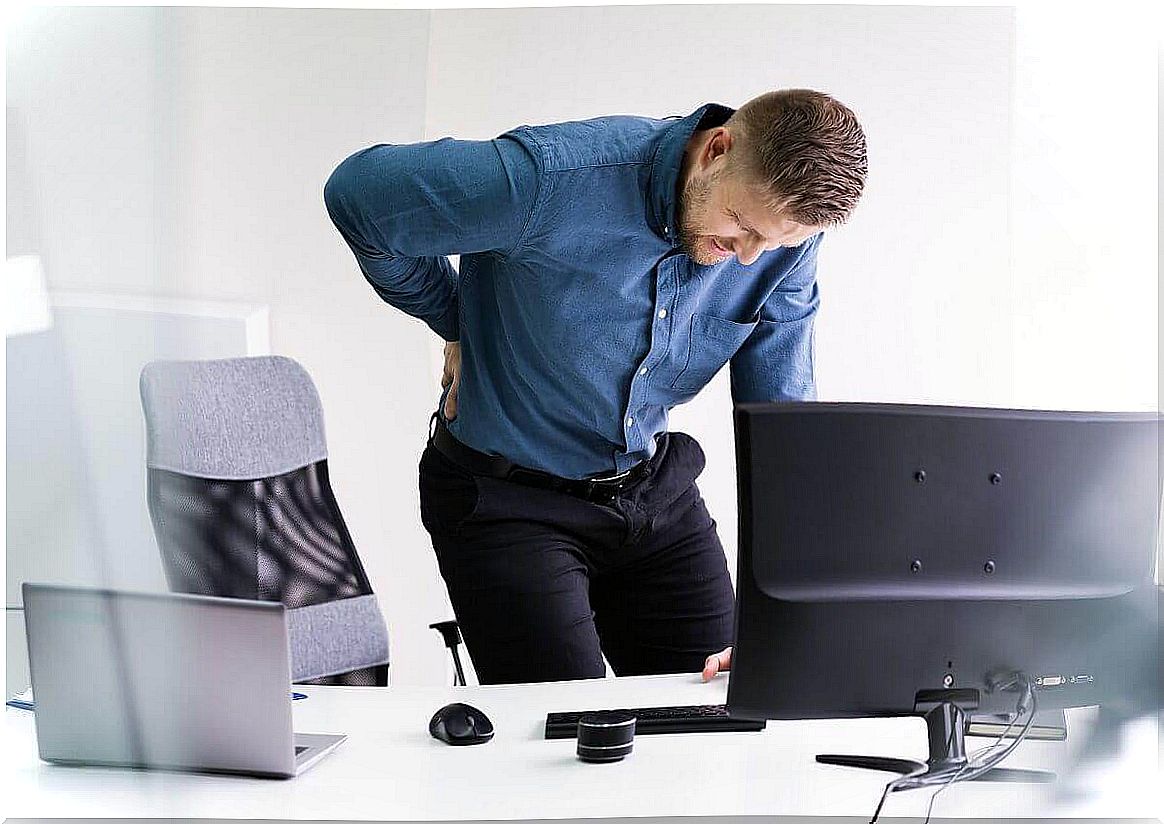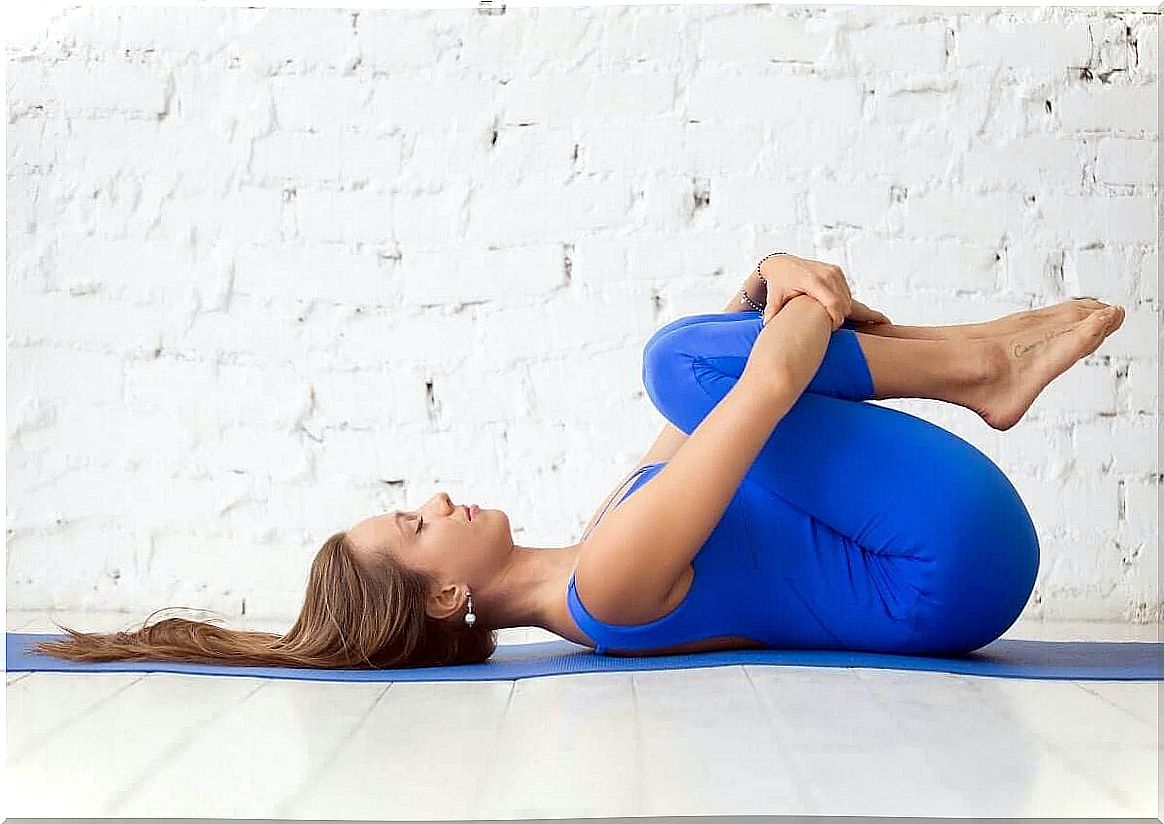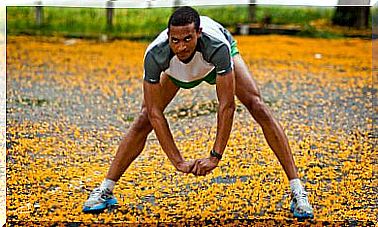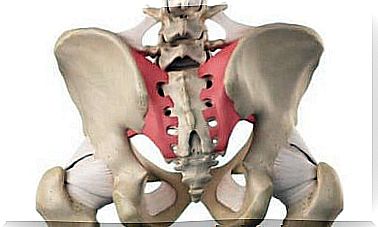Exercises To Fight A Herniated Disc

The performance of exercises to combat a herniated disc is one of the medical indications that accompany the protocol for approaching this pathology. Both health professionals and people linked to the world of gymnastics agree on the importance of physical activity for these patients.
Disc herniation has different forms of presentation according to its location in the spine. Likewise, the degrees of severity are variable, as are the symptoms that accompany it. Read on to learn more about exercises to fight herniated discs.
What types of herniated discs are there?
A herniated disc is an intervertebral disc protruding from the spinal axis. This abnormal position of the anatomical structure comes into contact with other tissues that, in the end, will determine the symptoms.
The entire length of the spine can suffer from a hernia. This helps to classify the condition, which can be cervical, thoracic, or lumbar. The first and last are by far the most frequent.
If we think of the spine as a pile of vertebrae, we understand that between them there must be something that acts as a shock absorber. That something is the intervertebral disc, formed by a more fibrous capsule and a soft, impact-absorbing center of consistency .
The discs are located between the bony vertebral bodies, and maintain a central position at the back that respects the limits imposed on them by the bones. When one of the discs comes out to the side because of a hernia, internal balance is lost and the nerves become inflamed by proximity.
Thus, we can classify the following types according to their symptoms:
- Cervical: A cervical disc herniation is located in the neck, and its primary symptoms are usually neck pain and pain in the upper limbs.
- Thoracic: This is the least common and presents with pain in the chest or in the path of the ribs.
- Lumbar: A lumbar disc herniation tends to generate signs in the lower limbs, such as lumbar sciatic pain.

What exercises are used to fight a herniated disc?
As we have already seen that there are different types and symptoms of herniated discs, we will also have to divide the recommended exercises according to the affected area. We cannot recommend lower limb movement for people with neck pain or vice versa.
Exercises for cervical disc herniation
In this case, self-massage in the neck seems to have the most scientific evidence in its favor. Often, when a person goes to see this disease, the doctor recommends physical therapy and teaches how to perform massages at home.
It is advisable to consider that, in addition to the specific technique, the use of the fingers and the circular direction of movement are important. These self-massages can be done at any time, during breaks from work, watching TV or any time of relaxation.
An anaerobic physical activity at the gym is not a bad choice. It is generally recommended to start once the first sharp pain has passed. The goal is to tone the neck muscles that support the spine. This provides more support for the spine’s central balance.
The muscles that are worked are the paravertebral, in a non-painful position. Weight should be handled with caution, as herniated cervical disc adhesions remove force in the upper limbs, resulting in accidents when holding weights or dumbbells.
Sports recommendations for a thoracic hernia
Dorsal or thoracic disc herniation is little known. In fact, many people may believe that the disorder cannot exist at this point in the spine. However, not only does it exist, but its approach is more complicated than in other forms of presentation.
The recommended exercise is active and progressive. Fitness routines focused on stability and strength are established, so it is common for physical therapists to insist on static positions for propioception.
As recovery and muscle strength develop, new workouts are developed. In this type of disorder, monitoring by a professional is essential.

Exercises for patients with lumbar disc herniation
Typical lumbar sciatic pain is the sign of the development of a lumbar hernia. It starts with focused pain in the lower back that travels down the path of the sciatic nerve to the groin, thigh, and even the big toe.
It is recommended to follow the exercises that are performed with thermal therapy to relax the muscle fibers around the lesion, which are almost always affected by muscle contractures. This is an antalgic response from the body.
Stretches are fundamental and must be repetitive. The lower limbs have to reach their maximum amplitude, within the possibilities of each patient, to release the nervous compression. If the patient is in the workplace, it is important to create active rest spaces for this purpose.
Using gym balls to strengthen the core muscle region of the body also helps. As in the neck, it is intended to increase the strength of the surrounding tissues to support the balance of the spine.
Fighting Herniated Disc Naturally
Exercises to combat herniated discs are an alternative to using painkillers. Although the latter will help relieve pain, it is best to avoid overuse.
With an exercise plan and an active lifestyle, a herniated disc is manageable in most situations. Therefore, in the face of this disease, it is better to consult a physical therapist for guidance on the best options for each specific case.








